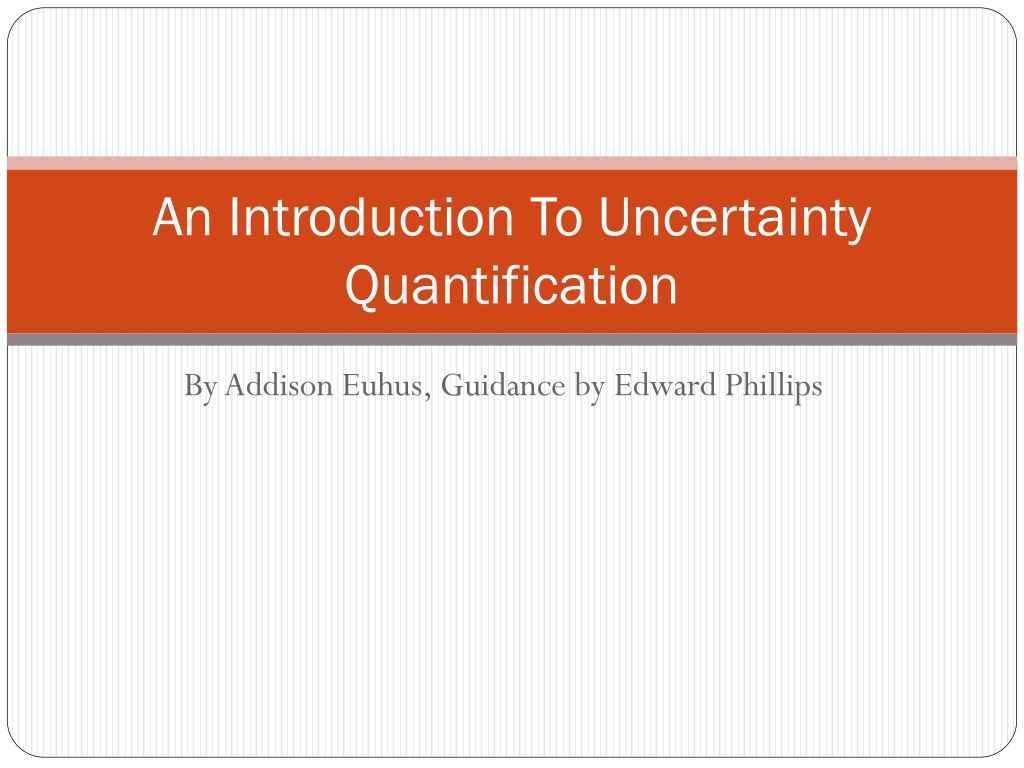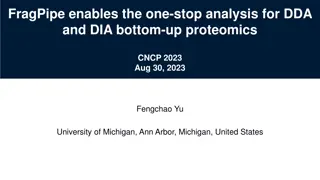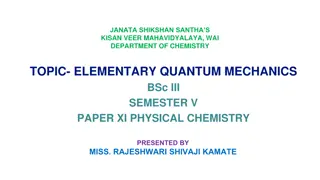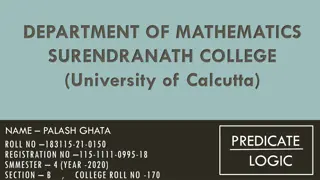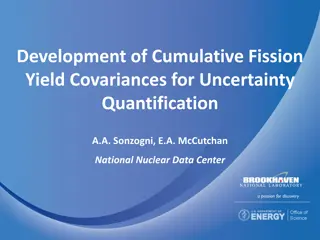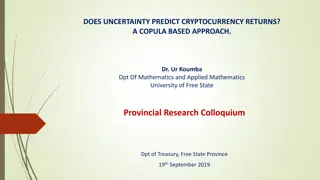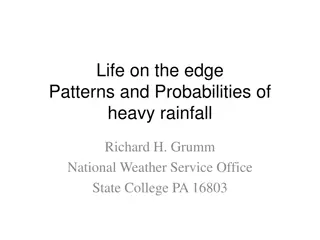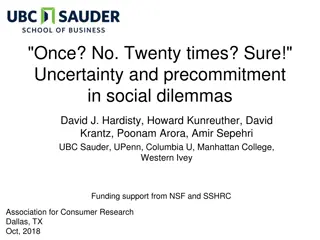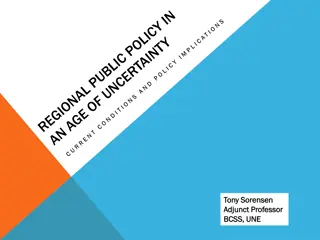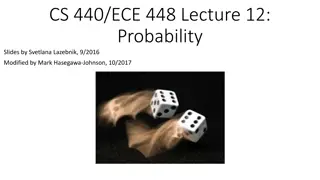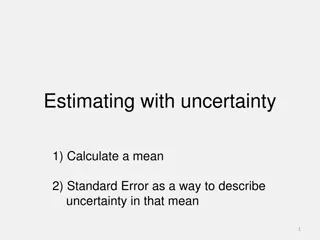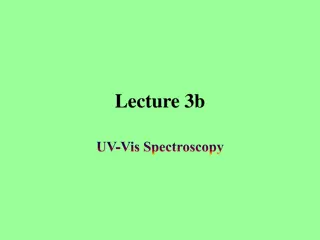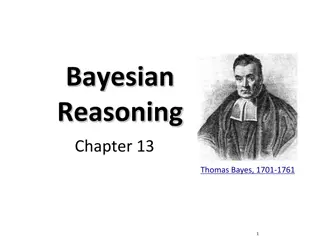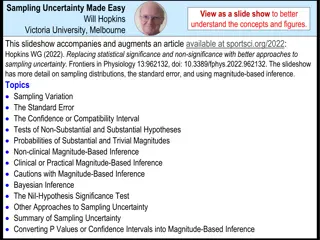Understanding Uncertainty Quantification: A Comprehensive Overview
Uncertainty Quantification (UQ) is crucial in determining likely outcomes in scenarios with unknown factors. Explore the concept through the Algae Example, where parameters like growth rates pose challenges due to uncertainty. Statistical techniques like MCMC and the DRAM algorithm play key roles in quantifying and addressing uncertainties effectively.
Download Presentation

Please find below an Image/Link to download the presentation.
The content on the website is provided AS IS for your information and personal use only. It may not be sold, licensed, or shared on other websites without obtaining consent from the author. Download presentation by click this link. If you encounter any issues during the download, it is possible that the publisher has removed the file from their server.
E N D
Presentation Transcript
An Introduction To Uncertainty Quantification By Addison Euhus, Guidance by Edward Phillips
Book and References Book Uncertainty Quantification: Theory, Implementation, and Applications, by Smith Example Source/Data from http://helios.fmi.fi/~lainema/mc mc/
What is Uncertainty Quantification? UQ is a way of determining likely outcomes when specific factors are unknown Parameter, Structural, Experimental Uncertainty Algae Example: Even if we knew the exact concentration of microorganisms in a pond and water/temperature, there are small details (e.g. rock positioning, irregular shape) that cause uncertainty
The Algae Example Consider the pond with phytoplankton (algae) A, zooplankton Z, and nutrient phosphorous P
The Algae Example This can be modeled by a simple predator prey model
Observations and Parameters Concentrations of A, Z, and P can be measured as well as the outflow Q, temperature T, and inflow of phosphorous Pin However, the rest of the values cannot be measured as easily growth rate mu, rho s, alpha, k, and theta. Because of uncertainty, these will be hard to determine using standard methods
Statistical Approach: MCMC Markov Chain Monte Carlo (MCMC) Technique Specify parameter values that explore the geometry of the distribution Constructs Markov Chains whose stationary distribution is the posterior density Evaluate realizations of the chain, which samples the posterior and obtains a density for parameters based on observed values
DRAM Algorithm Delayed Rejection Adaptive Metropolis (DRAM) Based upon multiple iterations and variance/covariance calculations Updates the parameter value if it satisfies specific probabilistic conditions, and continues to iterate on the initial chain Monte Carlo on the Markov Chains
Running the Algorithm Using MATLAB code, the Monte Carlo method runs on the constructed Markov Chains (the covariance matrix V) After a certain amount of iterations, the chain plots will show whether or not the chain has converged to values for the parameters After enough iterations have been run, the chain can be observed and the parameter calculations can be used to predict behavior in the model
